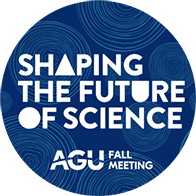 Upwelling regions account for just 1% of the world’s oceans, yet they are responsible for producing roughly half of the global fishing industry’s annual harvest—worth an estimated $362 billion as of 2016. These nutrient-dense, cool-water regions play a vital role in global ecosystems, supporting the growth of the seaweed and plankton that are the backbone of the marine food web.
Upwelling regions account for just 1% of the world’s oceans, yet they are responsible for producing roughly half of the global fishing industry’s annual harvest—worth an estimated $362 billion as of 2016. These nutrient-dense, cool-water regions play a vital role in global ecosystems, supporting the growth of the seaweed and plankton that are the backbone of the marine food web.
Remote sensing technology enables scientists to keep a close eye on how climate change is affecting upwelling regions. Satellites in low Earth orbit, for example, can provide estimates of water temperature and other key upwelling metrics across vast swaths of the planet. Satellite technology has an easier time with some regions than with others, however. In the Arctic—a critical area for both global climate and ocean biodiversity, where significant upwelling takes place—the complexities of sea ice processes and other phenomena can drive big differences between data captured by satellite and data captured on the ground (or “on the water,” as the case may be).
A 2019 study conducted by NASA’s Jet Propulsion Laboratory represents an important, albeit incremental, step forward in addressing this problem. “One of the challenges in remote sensing right now is to improve the satellite-derived data sets so people can use them for monitoring purposes,” said Jorge Vazquez, lead author of the study. Vazquez presented his findings in a poster session at AGU’s Fall Meeting 2020.
Setting a Saildrone on the Bering Sea
Vazquez and his team set out to compare satellite-derived measurements of the Bering Strait region off the coast of Alaska against measurements taken in situ, or directly from the water. The data examined metrics like sea surface temperature and sea surface salinity.
“The Arctic is a major driver of climate on our planet, and it’s also an area where it’s difficult to get what we call validation of remote sensing data,” said Vazquez. He explained that satellite technology can provide estimates for things like sea surface temperature but that there is still some question as to how accurate those estimates are.
To validate their satellite-derived measurements, Vazquez and his team launched multiple deployments of a saildrone, an uncrewed, wind- and solar-powered sailing vessel capable of conducting data collection missions for up to 12 months on the open seas—all without a single human on board.
Analyzing two saildrone deployments conducted over the spring and summer of 2019, the NASA study found a remarkably strong correlation between measurements taken by satellite and measurements taken by the saildrones in situ. Satellites were even able to clearly detect a major freshening event, in which the Yukon River discharged significant amounts of freshwater into the Bering Sea. Vazquez’s team believes this is the first time satellite data have been used to detect freshening in the Bering Sea related to the Yukon River.
“Why is this such an important result? Because the Arctic is driven a lot by precipitation, by ice melt, by snow,” said Vazquez. “By monitoring such things…we can also monitor changes in the ice conditions of the Arctic in Alaska, and how [they’re] influencing such issues as the amount of water in rivers, and that’s a huge, huge breakthrough.”
“I’m a huge proponent of Earth observation from space. I think that it provides an incredibly important, complementary view to what we get by being on a ship,” said Eric Hochberg, senior scientist at the Bermuda Institute of Ocean Sciences. “It’s important to have complementary viewpoints, and it’s also very important that we know [that] our satellite data, our products, are accurate.”
Vazquez believes that satellite technology could play a vital role in monitoring ocean upwelling regions, and he envisions a future in which satellite data help make the global fishing industry more efficient. “Upwelling regions are not in the same place year after year. They change location,” he said. “If you have a system that can monitor those changes, it also has a great economic impact, because you can report those changes to fisheries, to recreational users.”
—R. M. Davis (@robertmdvs), Science Writer
